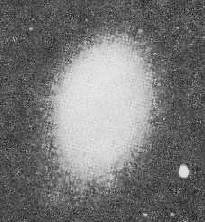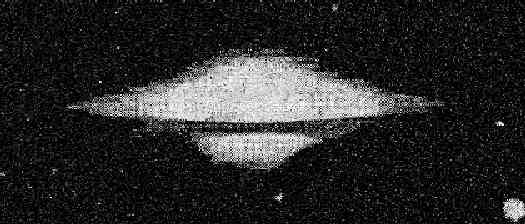SELF |
O. N. Karavashkina and S. B. Karavashkin. | 24 |
| Some aspects of the Earth evolution | ||
|
||
SELF |
O. N. Karavashkina and S. B. Karavashkin. | 24 |
| Some aspects of the Earth evolution | ||
|
||
See the natural analogues of considered axially symmetrical bodies in Fig. 1.6.
|
 a) the conglobate stellar association 47 Tuckane, such structures are also typical for central areas of galaxies [31, p. 337];
|
 b) the conglobate stellar association Pleiades [20, p. 110, Fig. 93 b]; |
 c) the typical shape of elliptic galaxy [20, p. 123, Fig. 105]; |
 d) the butt appearance of spiral galaxy NGC 4594 [32, p. 60, Fig. 21];
|
 e) the butt appearance of spiral galaxy NGC 4565 [32, p. 56, Fig. 19]. Fig. 1.6. Natural analogues of MacLoren spheroids: |
| However the separated rings stability is not the only issue, and in view of accumulated knowledge not the most principal. No less important is the problem of composition of rings. If some body loses an outer ring, the material of this ring will usually consist of the elements of its photosphere, the heavy matter that builds the planets will be absent. Though the known data of a protoplanet nebula composition tell of the excess of elements, already inherent not in the photosphere. "Below we present the logarithms of relative abundance of different chemical elements for some 'average' planetary nebula (see Table 1). In the lower line we give the corresponding abundance for the plasma of Sun atmosphere. With it, the logarithm of hydrogen abundance is 12. |
Table 1
|
| We can see a high abundance of
carbon (5 times more than on the Sun). Possibly, this is due to the conditions of
planetary nebulas formation" [19, p. 48]. Thus, following the Kant and Laplace
hypotheses, in the internal area of the nebula there must be present all elements which we
find in the Earth, Moon, Mars and Venus, but the table says opposite again. There is no
such spectrum in planetary nebulas. Even such important "building element" as
silicon is absent, though we track in stars spectra many spectral lines of
"heavy" elements. "Although the chemical composition
of stars in a first approximation is similar, there exist stars showing definite features
in this relation. For instance, there exist stars containing anomalous amount of carbon,
or there occur the wonderful objects with the anomalous content of rare-earth. The
overwhelming majority of stars has absolutely negligible abundance of lithium ( |
Contents: / 18 / 19 / 20 / 21 / 22 / 23 / 24 / 25 / 26 / 27 / 28 / 29 / 30 / 31 /